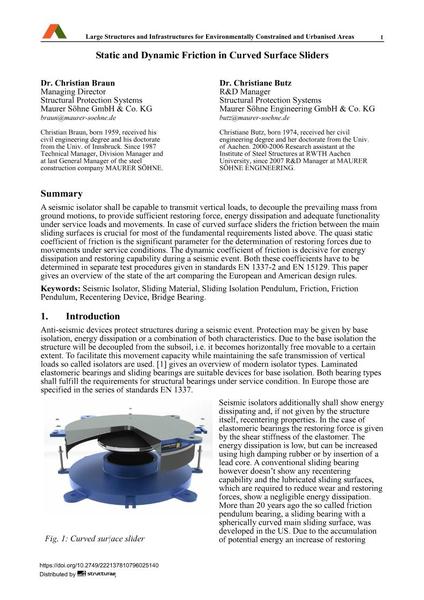Static and Dynamic Friction in Curved Surface Sliders

|
|
|||||||||||
Bibliografische Angaben
| Autor(en): |
Christian Braun
Christiane Butz |
||||
|---|---|---|---|---|---|
| Medium: | Tagungsbeitrag | ||||
| Sprache(n): | Englisch | ||||
| Tagung: | IABSE Symposium: Large Structures and Infrastructures for Environmentally Constrained and Urbanised Areas, Venice, Italy, 22-24 September 2010 | ||||
| Veröffentlicht in: | IABSE Symposium Venice 2010 | ||||
|
|||||
| Seite(n): | 400-401 | ||||
| Anzahl der Seiten (im PDF): | 8 | ||||
| Jahr: | 2010 | ||||
| DOI: | 10.2749/222137810796025140 | ||||
| Abstrakt: |
A seismic isolator shall be capable to transmit vertical loads, to decouple the prevailing mass from ground motions, to provide sufficient restoring force, energy dissipation and adequate functionality under service loads and movements. In case of curved surface sliders the friction between the main sliding surfaces is crucial for most of the fundamental requirements listed above. The quasi static coefficient of friction is the significant parameter for the determination of restoring forces due to movements under service conditions. The dynamic coefficient of friction is decisive for energy dissipation and restoring capability during a seismic event. Both these coefficients have to be determined in separate test procedures given in standards EN 1337-2 and EN 15129. This paper gives an overview of the state of the art comparing the European and American design rules. |
||||
| Stichwörter: |
Reibung Brückenlager
|
||||
